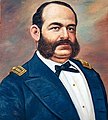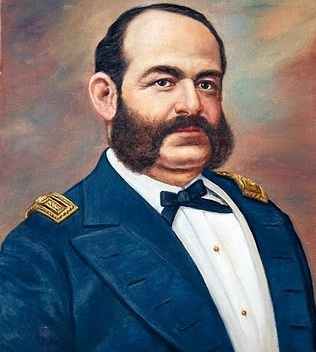File:Miguel Grau 01.jpg
Miguel_Grau_01.jpg (316 × 352 pixels, file size: 45 KB, MIME type: image/jpeg)
This file is from Wikimedia Commons and may be used by other projects. The description on its file description page there is shown below.
Miguel Grau Seminario
Óleo del Gran Almirante del Perú Miguel Grau Seminario; en la fecha se encuentra en el Museo Naval del Perú en el Callao.
(act) 01:47 12 oct 2004 . . Alstradiaan (Discusión | contribuciones | bloquear) . . 180×231 (9.521 bytes) (Miguel Grau Seminario)
|
This is a faithful photographic reproduction of a two-dimensional, public domain work of art. The work of art itself is in the public domain for the following reason:
The official position taken by the Wikimedia Foundation is that "faithful reproductions of two-dimensional public domain works of art are public domain".
This photographic reproduction is therefore also considered to be in the public domain in the United States. In other jurisdictions, re-use of this content may be restricted; see Reuse of PD-Art photographs for details. |
| Public domainPublic domainfalsefalse |
According to the law 13714 (1961), under the administration of the government of Manuel Prado and was not renewed on the URAA date, the work is public domain in Perú because are met the following criteria:
In the case of collective works, the term from the death of the last author is considered. In conjugal works, its "moral rights" are considered. More information and examples in COM:Peru. |
Captions
Items portrayed in this file
depicts
File history
Click on a date/time to view the file as it appeared at that time.
| Date/Time | Thumbnail | Dimensions | User | Comment | |
|---|---|---|---|---|---|
| current | 19:02, 6 May 2012 |  | 316 × 352 (45 KB) | wikimediacommons>Asdqwdwqd1 | calidad |
File usage
There are no pages that use this file.
